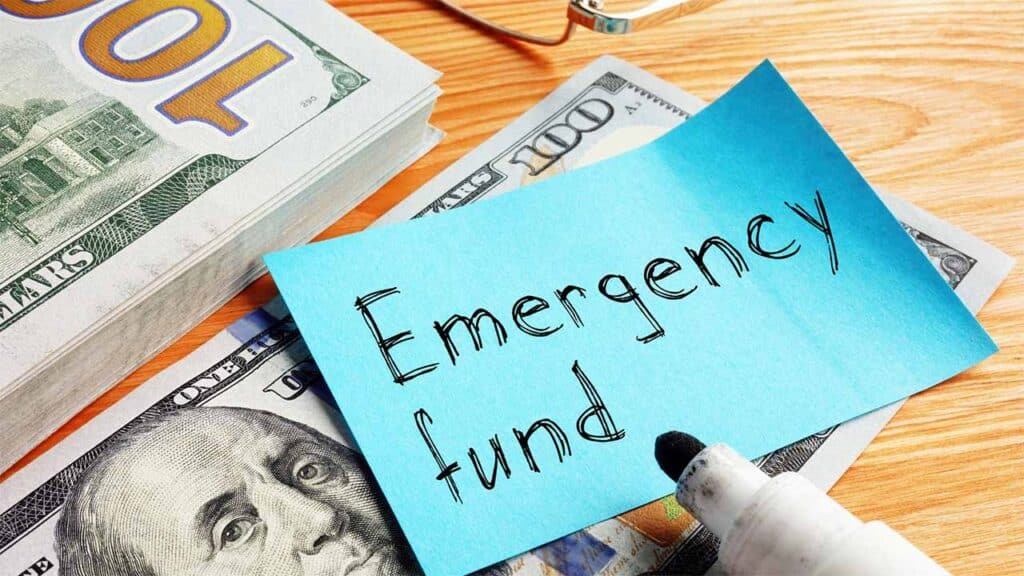Your 20s are a transformative decade where you lay the groundwork for your future financial success.
Setting specific financial goals during this time can help you build wealth, avoid debt traps, and ensure financial stability in the years ahead.
Whether you’re just starting your career, planning for big milestones, or looking to secure your financial independence, there are a range of goals that can guide you toward a brighter future.
In this comprehensive guide, we’ll explore 12 financial goals that you should aim to accomplish in your 20s.
These goals cover everything from budgeting and saving to investing and building good financial habits, providing you with a solid roadmap for success.
1. Build an Emergency Fund
An emergency fund is a financial safety net for unexpected expenses like medical bills, car repairs, or job loss.
Having a robust emergency fund ensures that you can cover these costs without going into debt or disrupting your long-term financial plans.
How Much Should You Save?
- Aim to save at least 3 to 6 months’ worth of living expenses in your emergency fund.
- Start small by setting an initial goal of $1,000, then gradually increase the amount.
- Keep your emergency fund in a high-interest savings account that’s easily accessible but separate from your checking account to avoid temptation.
2. Create a Monthly Budget
A budget helps you track your income and expenses, ensuring that you live within your means and have enough money left over for saving and investing.
Budgeting is one of the most important financial skills to master in your 20s.
Steps to Create an Effective Budget
- Track Your Income and Expenses: Use budgeting apps or spreadsheets to monitor where your money goes each month.
- Use the 50/30/20 Rule: Allocate 50% of your income to needs (rent, groceries, utilities), 30% to wants, and 20% to savings and debt repayment.
- Adjust as Needed: Regularly review your budget to identify areas where you can cut back or increase savings.
3. Pay Off High-Interest Debt
High-interest debt, such as credit card balances, can quickly spiral out of control if not managed effectively.
Paying off debt in your 20s frees up your income for future savings and investments.
How to Tackle High-Interest Debt
- Focus on Credit Cards: Prioritize paying off credit card debt, as it often carries the highest interest rates (15-25%).
- Debt Snowball or Avalanche Method: Use the snowball method to pay off the smallest balances first for quick wins or the avalanche method to focus on the highest-interest debt.
- Consolidate Debt: Consider a balance transfer card or a debt consolidation loan to reduce interest rates and simplify payments.
4. Start Contributing to a Retirement Plan
Saving for retirement may seem like a distant goal in your 20s, but the earlier you start, the more time your investments have to grow.
By contributing to retirement accounts now, you can take advantage of compound interest and ensure a more comfortable retirement.
Retirement Savings Options
- 401(k): If your employer offers a 401(k), start contributing as soon as you’re eligible. Take advantage of any employer match, as this is essentially “free money.”
- IRA (Individual Retirement Account): Open a Roth IRA or Traditional IRA if your employer doesn’t offer a retirement plan or if you want to supplement your 401(k).
- Set a Contribution Goal: Aim to save at least 15% of your income for retirement. If that’s not feasible, start with a smaller amount and increase your contributions over time.
5. Build Good Credit
Your credit score plays a significant role in your financial life, impacting your ability to secure loans, mortgages, or even rent an apartment.
Building and maintaining good credit in your 20s can save you thousands of dollars in interest payments in the future.
Tips to Build Good Credit
- Pay Bills on Time: Your payment history makes up 35% of your credit score, so always pay bills on or before the due date.
- Keep Credit Utilization Low: Aim to use less than 30% of your available credit to keep your credit utilization ratio in check.
- Avoid Applying for Too Much Credit: Multiple credit inquiries in a short period can lower your score. Only apply for credit when necessary.
6. Start Investing Early
Investing in your 20s gives your money more time to grow through compound interest. Even small investments made early can grow into significant sums over time.
The key is to start as soon as possible and stay consistent.
Beginner Investment Options
- Index Funds: These are low-cost funds that track a broad market index like the S&P 500, providing diversification and long-term growth.
- ETFs (Exchange-Traded Funds): Similar to index funds, ETFs are a good option for beginners looking to invest in a diversified portfolio.
- Robo-Advisors: If you’re unsure where to start, consider using a robo-advisor like Betterment or Wealthfront, which automatically invests your money based on your risk tolerance.
7. Build a Diversified Portfolio
A diversified portfolio reduces risk by spreading your investments across different asset classes, industries, and regions.
This ensures that if one investment performs poorly, others may offset the losses.
How to Diversify Your Portfolio
- Mix Asset Classes: Include a combination of stocks, bonds, real estate, and cash equivalents in your portfolio.
- Invest Internationally: Consider international stocks and funds to further diversify your risk.
- Rebalance Regularly: Review your portfolio at least once a year to ensure it aligns with your risk tolerance and financial goals.
8. Save for Big Purchases
Whether you’re saving for a car, a down payment on a home, or a dream vacation, it’s essential to plan ahead for big purchases.
Setting financial goals for these major milestones will help you avoid debt and ensure that you’re making smart financial decisions.
Tips for Saving for Big Purchases
- Set Specific Savings Goals: Know exactly how much you need to save and by when. Use savings calculators to estimate how much you should set aside each month.
- Open a Dedicated Savings Account<span style=”font-weight: 400;”>: Keep your savings for big purchases separate from your other accounts to avoid spending the money on everyday expenses.
- Automate Savings: Set up automatic transfers to your savings account to ensure you consistently save for your goals.
9. Get Adequate Insurance Coverage
Having the right insurance in place ensures that unexpected events don’t derail your financial goals.
Whether it’s health insurance, life insurance, or renters insurance, coverage protects you from significant financial losses in case of emergencies.
Essential Insurance Types for Your 20s
- Health Insurance: Make sure you have health coverage, either through your employer or a private plan.
- Renters Insurance: Protects your personal belongings in case of theft, fire, or other damages.
- Life Insurance: If you have dependents or significant debt, consider purchasing life insurance to provide for your loved ones in case of your death.
10. Create a Long-Term Financial Plan
In your 20s, it’s essential to create a long-term financial plan that outlines your goals and how you intend to achieve them.
This includes planning for major life events like buying a home, starting a family, and retiring.
A well-thought-out financial plan gives you direction and helps you make informed financial decisions.
Steps to Create a Long-Term Financial Plan
- Set Short-Term and Long-Term Goals: Write down both your immediate financial goals (e.g., paying off debt) and long-term goals (e.g., retirement savings).
- Determine Your Net Worth: Calculate your current net worth by subtracting your liabilities from your assets. This gives you a clear picture of your financial health.
- Adjust as Needed: Your financial goals and situation will change over time, so revisit your financial plan regularly and adjust it as needed.
11. Increase Your Financial Literacy
Understanding personal finance is key to making informed decisions that will benefit your future.
Improving your financial literacy empowers you to manage your money more effectively, make smarter investment choices, and avoid debt traps.
Ways to Boost Financial Literacy
- Read Personal Finance Books: Start with beginner-friendly books like “The Total Money Makeover” by Dave Ramsey or “Rich Dad Poor Dad” by Robert Kiyosaki.
- Follow Financial Blogs & Podcasts: Subscribe to personal finance blogs or podcasts to stay updated on budgeting, investing, and saving tips.
- Take Online Courses: Platforms like Coursera and Udemy offer affordable personal finance courses that cover budgeting, investing, and financial planning.
12. Build Multiple Streams of Income
Relying on a single source of income can be risky, especially in uncertain economic times.
Building multiple streams of income helps create financial security and can accelerate your journey toward financial independence.
Ways to Create Additional Income Streams
- Start a Side Hustle: Whether it’s freelancing, tutoring, or selling products online, side hustles provide extra income.
- Invest in Real Estate: If feasible, consider investing in rental properties or REITs (Real Estate Investment Trusts) to generate passive income.
- Monetize a Hobby: Turn your passions into profits by offering services like photography, graphic design, or blogging.
Conclusion: Setting Yourself Up for Financial Success
Your 20s are the perfect time to start building strong financial habits that will serve you for the rest of your life.
By setting clear financial goals, from building an emergency fund to investing early, you can create a solid foundation for financial independence.
These 12 financial goals offer a roadmap to success, helping you manage your money wisely, avoid common financial pitfalls, and achieve long-term stability.
Start small, stay consistent, and watch your financial health grow as you move through this pivotal decade.








































